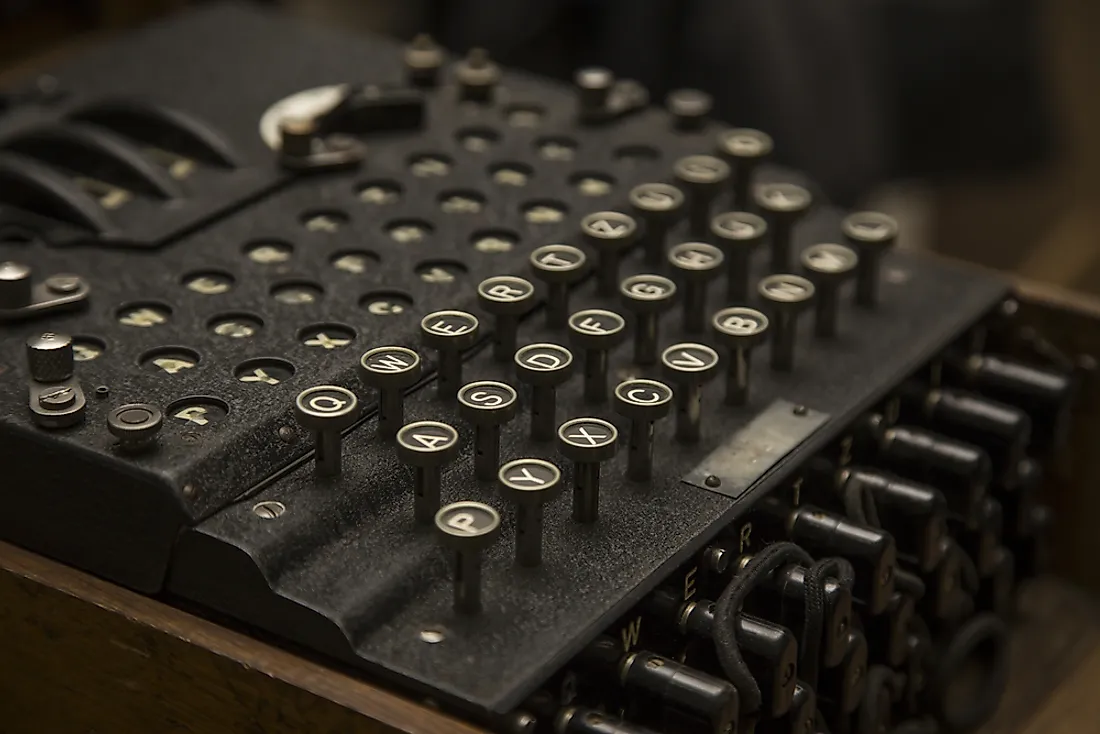What Was the Enigma Machine?

Enigma machines are a sequence of rotor cipher machines that were developed and used to protect military, diplomatic, and commercial communications during the early-to-mid twentieth century. The device was invented by Arthur Scherbius, a German engineer, after the First World War ended. He managed to set up his Cipher Machine Corporation in 1923 in Berlin which produced the cipher machines. Numerous models were developed with the German model being the most sophisticated. The German Navy managed to build their version by 1926 followed by the Army in 1928 and their Air-Force five years later.
How Did Enigma Machines Work?
Just like all the other rotor machines, this apparatus had both electrical and mechanical systems. The mechanical part of the system consisted of rotors which were arranged along its spindle, a keyboard, and a stepping component which turned one of the rotors when a key was pressed and a sequence of lamps for all the letters.
The machine was used to encrypt any plaintext message and for every letter typed by the operator the lamp showed a different letter as per the pseudo-random substitution. The letters displayed by the lights were recorded as the enciphered substitute. When the key is pressed, it moves one of the rotors, so that the next key uses a different electric pathway, therefore, producing a different substitute alphabet for all the letters. The cyphertext is then transmitted to another operator who deciphers the message. As long as the settings of the deciphering equipment resembled that of the enciphering machine, the message could be deciphered.
Cracking the Enigma Messages
The earlier machines were adopted by the government and military services of numerous nations like Germany who used it to send and receive messages before and during the Second World War. The British and their allies understood the problem posed by this equipment in 1931 when a German spy known as Hans Thilo allowed his French spymaster to take a photograph of a stolen operating manual for the Enigma machine. The manual included all the keys and plugboard settings which the Germans used in September and October 1932.
The British and their allies could not decipher the message; therefore, they handed them over to a Polish mathematician known as Marian Rejewski. Rejewski together with Henryk Zygalski and Jerzy Rozycki managed to build an Enigma double. They developed numerous techniques for defeating the plugboard and get all the components of the keys making it possible for them to read all the German enciphered messages from 1933 to 1939.
With the 1939 German invasion imminent, the Polish government decided to share their secrets with the British. The GC&CS (Government Code and Cipher School) in Buckinghamshire became the Allies center for dealing with the war-induced changes in the enciphered message. Since the Germans were convinced that their technology could not be deciphered, they continued using the machine for different types of communications with their secret services, in the sky, and on the battlefield. The decoded messages were given to a few commanders who used it cautiously making sure that the Germans did not find out that their cipher was broken.











